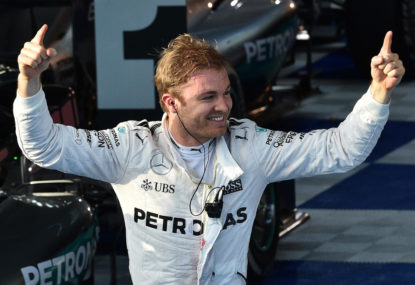Chinese Grand Prix talking points: Stroll has become the most hated F1 driver in a long time - but that's simply an unfair call!
The absolute vitriol against the Canadian that has come from the incident is beyond reprehensible.

If you noticed Sunday’s Grand Prix was light-on for radio messages between the drivers and the teams, it could have been the result of restrictions placed on communications by the FIA that were introduced just a few weeks before the race.
Addressing the media ahead of qualifying, FIA Race Director Charlie Whiting answered questions about many of the new regulations that have been brought in for 2016, but the main line of enquiry focused on the radio ban and its implications.
“What we’re trying to do is to make sure the driver is driving the car on his own, that he’s not being told how to drive the car,” explained Whiting. “Simple as that, really.”
“You’ll still get what I would call the juicy content – if someone has done something silly on track, the driver can call him an idiot and all that sort of stuff.”
Communications regarding safety are still permitted. Before the race, the limitations on discussing strategy were given some breathing room. However, the idea is to take away some of the assistance that the drivers receive from their engineers about setting up their car before the race start such as brake temperatures, tyre pressures and feedback on how to improve their performance around the track.
One driver who seemed to enjoy the prospect of having more control of the car was Australian Grand Prix winner Nico Rosberg.
“We’re not muppets anymore,” said Rosberg, suggesting that the drivers were now free. “We have to get the job done.”
His Mercedes teammate and Melbourne pole-sitter Lewis Hamilton lamented that he didn’t have time to savor his achievement and spent the evening before the race memorising endless strategies and race scenarios.
If you’re wondering how the stewards could possibly monitor every radio message on top of watching for drivers leaving the track and all the additional stewarding duties, Whiting was confident that his team were adequately prepared.
“We’re listening to it in real time,” he clarified. “We’ve got four people in race control listening to three drivers each, and then we’ve got four or five software engineers listening to two or three each.”
If you’re at all familiar with Formula One, you’ll be thinking that the teams will just use coded messages to get around the ban. And they probably will. So if strange messages about the weather or birds flying high in the sky are passed to the drivers, how can a coded message truly be determined?
“It can’t. Not clearly,” Whiting frankly admitted. “It depends entirely on what the message is and what the explanation is for that message.”
“Seriously, I think that even by using some of these things on the list there is probably a way of getting a message across which we weren’t intending them to, but we’ll have to deal with that on a case-by-case basis.”
Christian Horner had an even better idea during the team principle press conference.
“The bit that you should really hear is the intercom because there’s a far more interesting discussion going on on the pit wall,” said Horner. “We [Red Bull], for sure, would love to hear the Mercedes intercom!”
In a few months’ time the teams will have worked out systems for every possible permutation. The driver will, in reality, receive a huge amount of assistance from the teams, but importantly the FIA will have something to hang their hat by way of improving the ‘spectacle’ – whatever that means.
Given that the justification for banning these radio messages was that the fans expressed their dislike of drivers receiving too many driving instructions, you have to wonder why FOM who control the broadcasting don’t simply filter out the bland, juice-less messages and leave in the good stuff.
Only they will ever know.